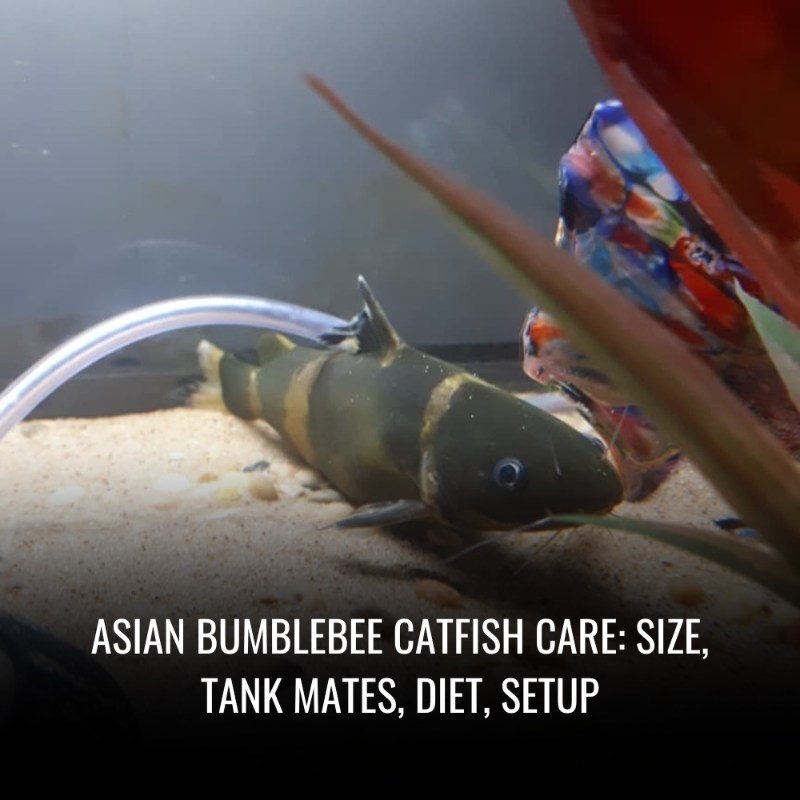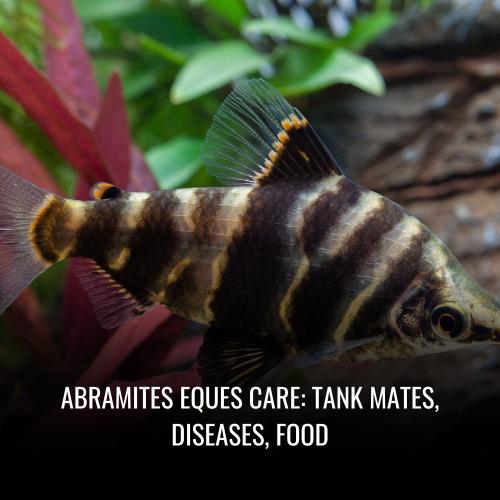Striped panchax Care: Size, Tank Mates, Diet, Setup & More
This post contains affiliate links. As an Amazon Associate, we earn from qualifying purchases.
The Striped Panchax, scientifically known as Aplocheilus lineatus, is a vibrant member of the Aplocheilidae family, often sought after by aquarium enthusiasts. Originating from Sri Lanka, this species exhibits a semi-aggressive temperament towards its own kind yet remains peaceful with other fish, making it a suitable candidate for larger community tanks.
| Property | Information |
|---|---|
| Scientific name | Aplocheilus lineatus |
| Common name | Striped Panchax, Golden Wonder Killifish |
| Family | Aplocheilidae |
| Usual size in fish tanks | 3 inches |
| Recommended pH range | 6.5 – 7.5 |
| Recommended water hardness (dGH) | 5 – 12 dGH |
| Recommended temperature | 72°F – 82°F |
| The way how these fish reproduce | Egg layers, scatter their eggs |
| Where the species comes from (Origin) | India, Sri Lanka, South Asia |
| Temperament to its own species | Semi-aggressive |
| Temperament toward other fish species | Peaceful with other fish |
| Usual place in the tank | Near water surface, open swimming area |
| Lifespan | 3-5 years |
| Tank size requirement | 10 gallons for a small group, 20+ gallons for a larger group |
| Filtration system | Efficient biological and mechanical filtration system |
| Sexual dimorphism | Males have more vibrant colors and longer fins |
| Substrate cleaning | Regular gravel vacuuming and partial water changes to maintain water quality |
Aquarists should pay attention to water quality and parameters to mimic their natural habitat, fostering a hardy yet carefully monitored environment. For a single Striped Panchax or a pair, a minimum tank size of 20 gallons with adequate filtration is advised. Substrate cleaning is significant to prevent pollution from uneaten food, ensuring the health and longevity of these captivating fish.
Scientific Name
The Striped Panchax, known scientifically as Aplocheilus lineatus, is a distinguished member of the Cyprinodontiformes order, nestled within the Aplocheilidae family. This species is most widely recognized by its defining scientific name, Aplocheilus lineatus, which is commonly used across the globe by both aquarists and scientific researchers.
| Taxonomy | Details |
|---|---|
| Order | Cyprinodontiformes |
| Family | Aplocheilidae |
| Genus | Aplocheilus |
| Species | Aplocheilus lineatus |
Considering the scientific community’s emphasis on precise identification, the use of Aplocheilus lineatus is integral for uniform understanding and conservation efforts surrounding this species.
Average Size
The allure of the Striped Panchax, also endearingly dubbed the Golden Wonder Killifish, lies not only in its bright hues but also in its compact and manageable size. On average, these aqua gems grow between 2 to 3 inches, making them the ideal visual accent for smaller tanks and a lively addition to home aquariums. Male Striped Panchax assertively reach up to 3 inches upon maturity, showcasing their splendid coloration, while females present a slightly humbler stature, leaving their flanks within the 2.5-inch range.
| Gender | Average Size |
|---|---|
| Male | Up to 3 inches |
| Female | ~2.5 inches |
A cohesive community tank hinges on this balance, as a flurried Striped Panchax effortlessly becomes the center of one’s underwater spectacle.
Lifespan
The Striped Panchax, often celebrated as the Golden Wonder Killifish, distinguishes itself from its kin with a remarkable longevity, capable of gracing an aquarium with its presence for up to a productive four years. Their resilience is attributed partly to their native survival strategies. Originating from habitats that are wet year-round in regions like Sri Lanka, these killifish do not face the same challenges as species that inhabit seasonally drying waters, therefore achieving a notable lifespan among killifish.
| Lifespan Determinant | Striped Panchax Advantage |
|---|---|
| Habitat Stability | Year-round water availability |
| Species Hardiness | Less vulnerability to seasonal changes |
Creating and sustaining the right environment for the Striped Panchax not only assures their vitality but also their well-being, enabling these jewel-toned fish to animate your aquatic assembly over time, making them a gratifying pursuit for dedicated fish enthusiasts.
Natural Habitat
The Striped Panchax (Aplocheilus lineatus) exhibits remarkable adaptability within its native territories of Sri Lanka and Peninsular India. The species thrives across varied aquatic ecosystems, from the high-altitude streams to the slow-moving swamps and fields of the plains. Their flexibility extends to brackish waters, characteristic of the adaptability that these fish possess.
The Striped Panchax is typically associated with stagnant or slow-flowing bodies of fresh water such as ponds, swamps, and canals. These locations are ideal for the fish’s mosquito control abilities, an ecological service that garners appreciation in their endemic regions. Their biotopes, especially those embracing flooded lowlands and slowly flowing waters, encompass a temperature range between 22 – 25°C, which is essential for sustaining their populations.
| Habitat Characteristics | Details |
|---|---|
| Location | Sri Lanka, Peninsular India |
| Environment | Streams, swamps, brackish waters |
| Water Movement | Slow-moving, stagnant |
| Temperature Range | 22 – 25 °C |
| Feeding Habits | Benthopelagic feeder |
| Diet | Insects, larvae, crustaceans, worms |
| Conservation Status | Least Concern (IUCN Red List) |
Appearance
The Striped Panchax Killifish, also known as Stribet Panchax, is renowned for its elongated, slender form accentuated by a pronounced lateral stripe that traces the length of its body. These aquatic beauties possess a captivating color palette, with the dorsal sections showcasing hues of olive green to brown that gently transition to a paler shade or white towards the belly. Notably, the Striped Panchax features an iridescent band, shimmering in shades of blue or gold, which adds to the fish’s allure.
| Physical Feature | Description |
|---|---|
| Body Shape | Elongated and slender |
| Lateral Stripe | Distinctive, running the length of body |
| Upper Body Color | Olive green to brown |
| Lower Body Shade | Lighter to white |
| Iridescent Band | Blue or golden |
| Dorsal Fin | Yellow or golden with black markings |
| Male Coloration | More vivid, especially during courtship |
This blend of unique characteristics ensures the Striped Panchax remains a popular and eye-catching species for aquarists.
Behavior & Temperament
Striped panchax, recognized for their peaceful demeanor, are not typically categorized as fin nippers. These killifish are known to coexist amicably with other members of a community aquarium, showing a preference for peace over aggression. This nature makes them particularly suited to tanks where delicate-finned species reside.
Although Striped panchax generally refrain from fin-nipping behavior, maintaining optimal conditions within the tank is essential to prevent stress, which could potentially alter their behavior.
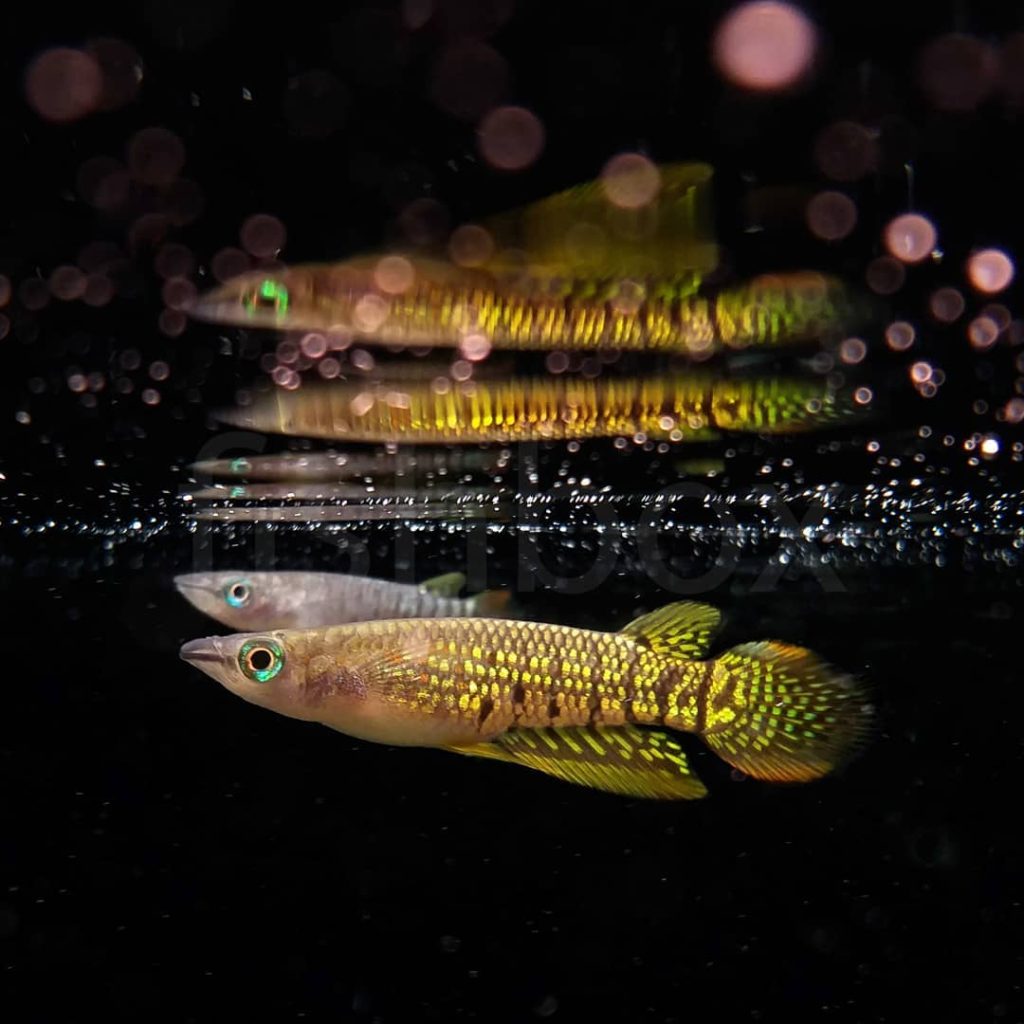
Are Striped panchax Aggressive To Each Other & Other Fish?
When it comes to interactions among their own kind as well as with other fish, Striped panchax are generally peaceable residents in a community tank setting. However, males may exhibit territorial instincts during the breeding season, which could lead to a slight uptick in aggression, particularly towards other males. To ensure a harmonious environment, providing ample space and hiding places within the aquarium is crucial, allowing for the establishment of territories and thus mitigating confrontations.
Are Striped panchax Friendly To Each Other & Other Fish?
Recognized not only for their visual appeal but also for their compatibility, Striped panchax are friendly and even-tempered towards tank mates of similar or larger size. Their presence in a community aquarium adds a dynamic and peaceful element, particularly when the community includes hardy species like larger tetras.
The Striped panchax does embrace its predatory nature, and caution should be taken when housing them with much smaller fish, which they may view as prey. Overall, their social inclination tends to promote a relaxed and intriguing tank environment.
Are Striped panchax Schooling Fish?
Originating from the vibrant ecosystem of rivers and streams in India and Sri Lanka, Striped panchax exhibit shoaling behavior in the wild, typically moving in groups for social interaction and protection.
To mirror their natural habitat, it is recommended to maintain these fish in groups within the aquarium. Typically, a school of these fish not only accentuates their beauty and energy but also plays a crucial role in their psychological well-being.
Can You Have Just One Striped panchax In The Tank?
While a solitary Striped panchax can survive in a tank, it is not an ideal situation for this inherently social species. Isolation can lead to stress, diminished demeanor, and potential aggression towards other smaller fish.
A solo Striped panchax might also appear more reclusive, often seeking the solitude of hiding rather than engaging in the typical exploratory and lively behaviors seen in groups. Thus, while possible, it is not recommended to keep a single Striped panchax if the aim is to foster a thriving and active specimen.
Do Striped panchax Need To Be In Groups?
Striped panchax thrive in a group dynamic, echoing their native preference for shoaling in the wild. Keeping them in groups not only promotes a natural and active lifestyle but also enhances their vibrant coloring and encourages typical schooling flair in the aquarium setting.
Food & Diet
From a practical standpoint, groups are preferable for breeding practices and ensure the psychological comfort of these fish. It is evident that for the well-being and natural display of Striped panchax, group living is a key component of their care in captivity.
Striped panchax are a species known for their robust appetite and carnivorous nature. Their diet in the wild primarily consists of small insects, invertebrates, and various larvae found in their natural habitats stretching from India to Sri Lanka. These fish display a natural predatory behavior, often hunting for their prey among aquatic vegetation and crevices in their environment.
In a controlled aquarium setting, Striped panchax adapt seamlessly to an array of dietary offerings. While they readily accept high-quality flake and pellet foods, their health and coloration benefit from the supplementation of live and frozen foods such as brine shrimp, bloodworms, and mosquito larvae. The inherent preference of Striped panchax for live, meaty foods is a reflection of their natural feeding habits and ensures that they are receiving optimal nutrition.
For the Striped panchax, a diet that’s replete with variety not only caters to their nutritional demands but also encourages natural predatory and foraging behaviors. Feeding should be regulated to small portions multiple times a day due to their modestly sized stomachs to prevent overfeeding which could lead to water quality degradation as well as health issues for the fish.
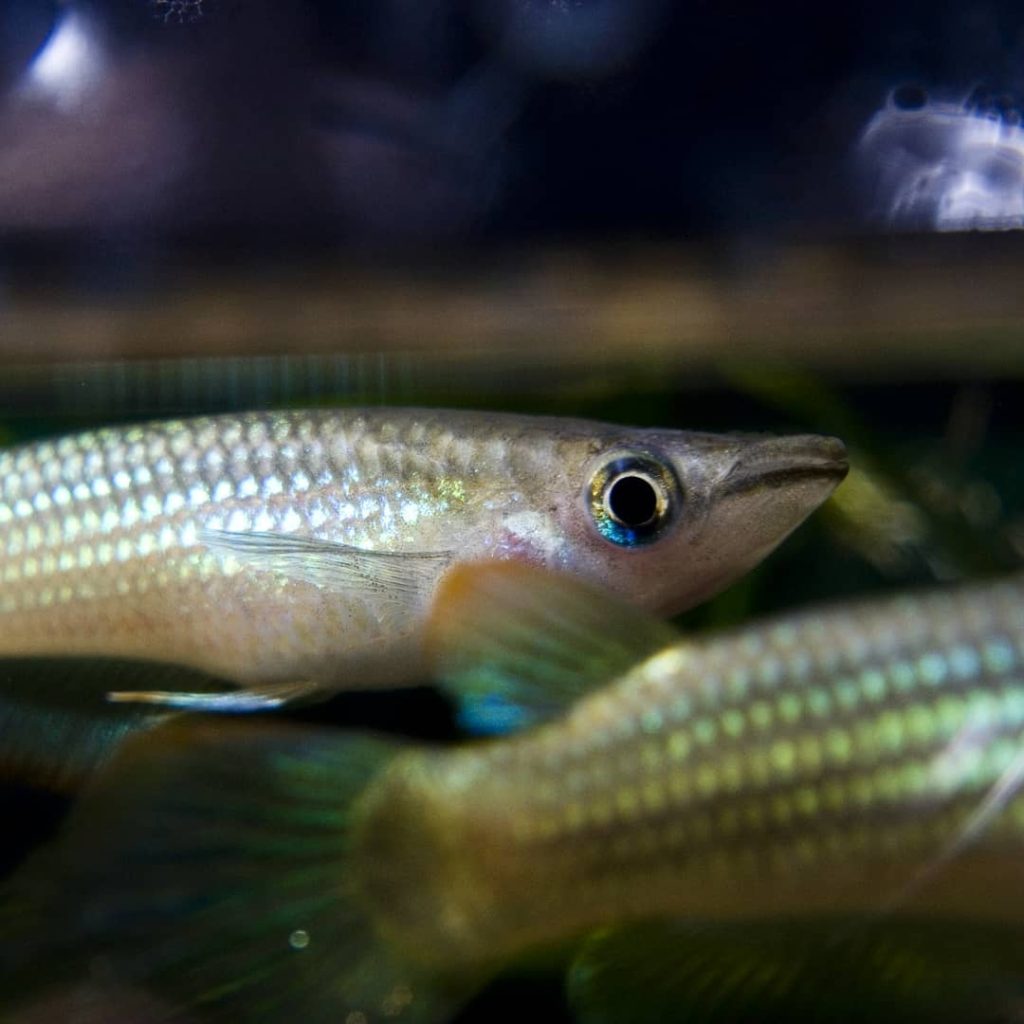
Do Striped panchax Eat Algae?
It is not common for Striped panchax to consume algae as a main component of their diet, given their carnivorous predisposition. While they might indirectly ingest small amounts of algae while searching for food, they do not seek it out as a primary source of nutrition.
Juvenile Striped panchax in the wild could incidentally feed on algae, but as they mature, their preference for meaty foods becomes more pronounced. In-home aquariums, their diets should focus on providing ample amounts of aquatic insects and other protein-rich foods to satisfy their nutritional needs and encourage healthy growth.
Do Striped panchax Eat Shrimp?
Striped panchax thrive on a varied diet inclusive of small live or frozen shrimp, such as baby brine shrimp. These serve as an excellent source of protein and critical nutrients which are essential for maintaining their vitality.
Introducing shrimp into their diet can mimic their wild feeding behaviors while providing physical and mental stimulation. It’s important, however, to view shrimp as a supplemental rather than primary food source to maintain a balanced diet in an aquarium habitat.
Do Striped panchax Eat Bloodworms?
Bloodworms are a favorable and wholesome diet component for Striped panchax, reflecting their natural inclination to hunt insect larvae and similar aquatic creatures. Not only do bloodworms tantalize their hunting instincts, but they also supply necessary nutrients that aid in the fish’s growth and overall health.
Incorporating bloodworms into the Striped panchax diet is advantageous, assisting in reproducing a semblance of their natural feeding patterns and promoting a healthy living environment within the aquarium.
Do Striped panchax Eat Mosquito Larvae?
The Striped panchax’s diet often includes insect larvae, such as mosquito larvae, which provides a natural source of protein in their ecosystem. This makes them valuable for natural mosquito control particularly in tropical areas like Sri Lanka where mosquitoes are prevalent.
By preying on mosquito larvae, Striped panchax contribute to managing these insect populations, highlighting their ecological role even in captivity. Including mosquito larvae in their aquarium diet fulfills a part of their nutritional and behavioral requirements.
Do Striped panchax Eat Planaria?
While not a primary food source, Striped panchax may prey on planaria found in their habitat due to their wide-ranging appetite for small invertebrates. Aquarium-kept Stripe panchax could benefit from the presence of planaria, potentially accepting them as a natural food source.
However, the aim should always be to provide a balanced and diverse diet that predominantly consists of meaty foods that are more closely aligned with their nutritional preferences.
Do Striped panchax Eat Plants?
Striped Panchax are not inclined to eat plants and do not require vegetation as part of their diet. Although they might occasionally nibble on soft, non-toxic plants if other food sources are insufficient, their feeding regime should primarily include a rich selection of proteins from live or frozen foods.
To prevent the Striped panchax from resorting to plant material, ensure the provision of a well-rounded diet that caters to their carnivorous nature. This approach encourages healthy feeding habits and averts attention away from any live or artificial plants in the aquatic environment.
Sexing: Male vs Female
Distinguishing between male and female Striped panchax is relatively straightforward, thanks to several distinct visual cues.
Males:
- Larger in size
- Vivid coloration
- Long, flowing fins
- Pointed anal fins
- Less visible stripes
Females:
- Smaller, with a muted gray body
- Subtle golden-bronze scale highlights
- Shorter, more rounded fins with yellow-orange edges
- Prominent dark lateral stripe when stressed
In your community aquarium, males stand out with their elaborate appearance, showcasing an array of colors that add vibrancy to the tank. Their ornate fins enhance their showiness, often making them the center of attention. On the flip side, females are less showy, with their primary gray color scheme accented by bronze scales and distinct fin shapes.
Striped panchax Tank Mates
When selecting tank mates for Striped panchax, aim for a harmonious community. These peaceful fish thrive alongside other non-aggressive species, making them a delightful addition to community tanks. Ideal companions include larger tetras and neon tetras, which share their tranquil demeanor. Additionally, Striped panchax can comfortably cohabitate with other sturdy, peace-loving aquarium residents such as Corydoras catfish and small gouramis, further encouraging a thriving aquatic social structure.
It is crucial, however, to be mindful of the Striped panchax’s predatory instincts. Very small fish might find themselves at risk, as they could be mistaken for food. Thus, they should not be kept with diminutive or fry-sized tank mates.
Striped panchax are adaptable in their positioning within the tank, usually frequenting the lower to mid-water levels, which allows them to coexist smoothly with other surface feeders and mid-water swimmers, creating a dynamic and layered aquarium ecosystem.
Suitable Tankmates for Striped Panchax:
- Larger Tetras (e.g., Black Skirt Tetra)
- Neon Tetras
- Harmonious Corydoras Catfish
- Small Peaceful Gouramis
- Other Mid-Water and Surface Feeders (that are not too small)
Aquarium Setup
Creating the perfect home for your Striped Panchax enhances not only their health but also their striking appearance. Their adaptable nature allows them to flourish in carefully curated environments that closely mirror their natural habitat.
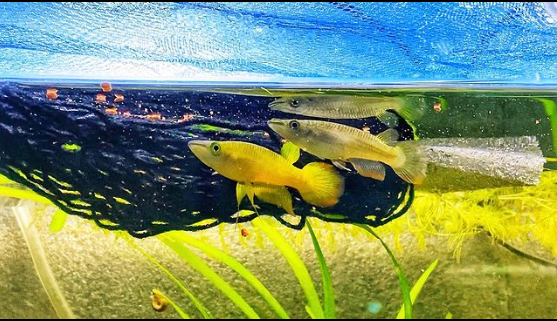
Ideal Tank Size
For a comfortable and engaging home, the minimum tank size for Striped Panchax should be 20 gallons. A roomier environment allows these surface dwellers to present their exotic behaviors. A lengthier aquarium usually fares better than a taller one since it provides ample surface area.
To safeguard against the Striped Panchax’s impressive leap, a snug-fitting lid is non-negotiable. The spacious quarters furnished with a miscellany of plant life and hardscape also affords enough room to add those compatible tank mates, forming a diverse and attractive aquatic community.
Ideal Water Parameters
Striped Panchax flourish within a specific range of water parameters that emulate their natural ecosystems. They prefer a balmy water temperature between 72°F to 82°F (22°C to 28°C), with the sweet spot around 75.2°F (24°C). The pH sweet spot arcs between 6.0 to 7.5, which tilts towards slightly acidic to neutral water.
Their adaptability extends to water hardness, but they favor soft to moderately hard water, measuring between 4 to 15 dGH (degrees of General Hardness). A steady hand in maintaining these parameters, alongside regular water quality testing, begets a thriving aquatic life for your fish.
Filtration
An optimal filtration system is imperative for sustaining the striped panchax’s health and clarity of their aquatic residence. The filtration should be adjusted to create a gentler water current, reflecting the pool of streams and ponds they’re accustomed to. Adding ample plant life or smooth stones can help buffer the water flow according to their comfort.
To accompany their surface feeding behavior, consider integrating a cleanup crew of bottom-dwelling scavengers or routine substrate cleaning to prevent the build-up of uneaten food. Regular water changes, up to 30% bi-weekly based on the bios load, complement the filtration system in preserving the pristine quality waters these fish treasure.
Lighting
Mimicking the soft, filtered light of a densely vegetated stream is key to an ideal Striped Panchax habitat. Low to moderate lighting ensures comfort and reduces stress, prompting natural foraging and social behaviors. LED lighting can provide a subdued effect suited to their preferences and foster an ambiance conducive to health and vitality.
While intense illumination may accelerate algae growth, it can also place undue stress on your panchax, dialing back their exuberance. Strategic lighting, much like the penumbra of their wild habitats, paired with shelters and plants, rounds off an idyllic domestic riverine scene.
Common Possible Diseases & Prevention
Striped Panchax are a robust group of Killifish, though they are not immune to the occasional health hiccup. Bacterial infections and the pesky velvet disease can sometimes trouble this otherwise sturdy fish if their aquascape sanctuary begins to decline in water quality.
Proactive Disease Prevention Measures
- Well-Balanced Diet: Present them with a smorgasbord of meaty foods like brine shrimp, mosquito larvae, river worms, and insect larvae to keep them at their best.
- Prudent Acclimation: Any newcomers—be it fish, plants, or décor—should be thoroughly cleaned or quarantined to prevent disease introduction.
- Environment Simplicity: Echo their natural habitat to minimize stress. A dark substrate, varied diet, and plant diversity are key elements to stabilize their environment.
- Vigilance with Water Parameters: Keep a close eye on the water’s pH, hardness, and temperature, striving for a sweet spot that mirrors their Sri Lankan streams.
Early detection and isolation of affected fish are imperative to restrain disease spread. Striped Panchax tend to gain the upper hand on illness if the aquarist is on guard for the initial warning signs and acts efficiently. Balancing preventive care with attentive observation carves the path to sustained health within your community tank.
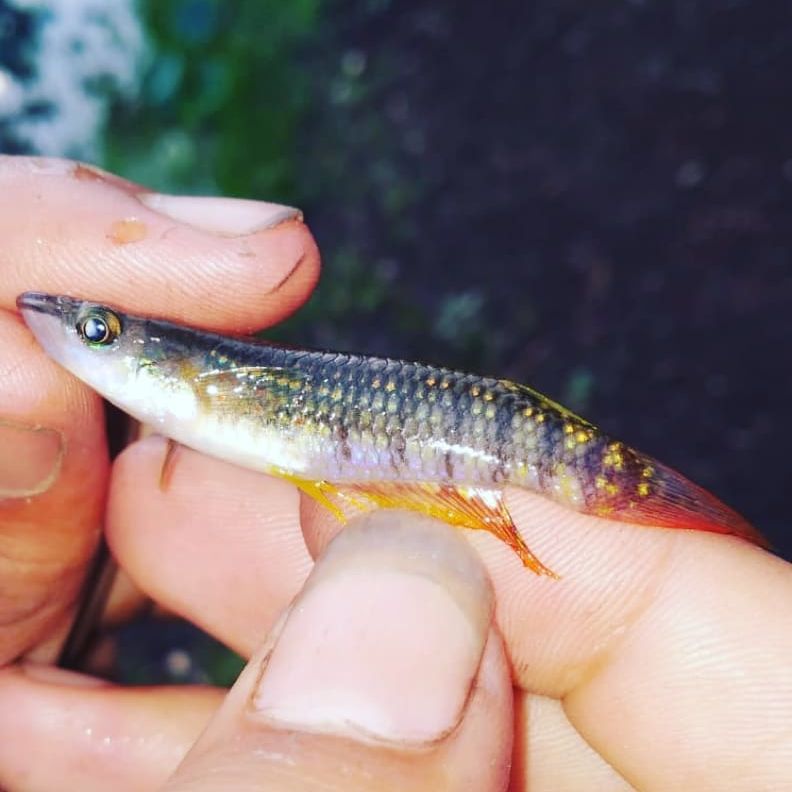
Breeding Striped panchax In Aquarium
Breeding the Striped Panchax, a peaceful and hardy fish, can be a gratifying experience for aquarium enthusiasts. It is recommended to designate a separate breeding tank to provide the best conditions. Here’s a quick guide to breeding these fascinating fish:
Setting Up the Breeding Tank:
Ensure the tank is dimly lit and densely planted to mimic the quietude of their native environments. This not only sets the mood but also offers the privacy they require.
Spawning Substrate:
- Peat moss
- Spawning mops
Place either peat moss or spawning mops at the bottom of the tank. These materials emulate the natural spawning grounds and encourage breeding behavior.
Breeding Process:
After spawning, the female Striped Panchax scatters eggs which are prone to predation by adults. It’s crucial to transfer the eggs to a separate hatchery promptly to ensure survival.
Egg Hatch Time: 12-15 days
Fry Care:
Once the fry hatch, begin feeding them a diet of:
- Infusoria
- Baby brine shrimp
- Finely crushed flake food
Catering to these requirements allows for the successful breeding and growth of Striped Panchax fry in your home aquarium.
Are Striped panchax Easy To Keep?
Striped Panchax, often recognized as Golden Wonder Killifish, are frequently lauded for their resilient and adaptative traits, making them ideal for novice aquarists. Their ability to endure a diverse spectrum of water parameters and straightforward dietary needs reduces the complexity typically associated with aquarium maintenance.
Not only do they have a reputation for being hardy, but their peaceful nature also allows for a seamless integration into community tanks, making them a harmonious fit alongside a variety of suitable tankmates.
Here are some basic care requirements to illustrate the simplicity of keeping Striped Panchax:
- Minimum Tank Size: While specific dimensions depend on the number of fish, a general rule is a 20-gallon tank for a small group.
- Diet: A varied menu including insect larvae, river worms, aquatic insects, and meaty foods ensures proper nutrition.
- Water Quality: Regular checks and changes are crucial to avoid the buildup of harmful substances like ammonia.
- Water Parameters: Temperature and pH should adhere to the species’ natural habitat conditions as closely as possible.
- Tank Environment: A dark substrate can help mimic their natural environment, along with plenty of space for swimming near the water surface, as they are known surface feeders.
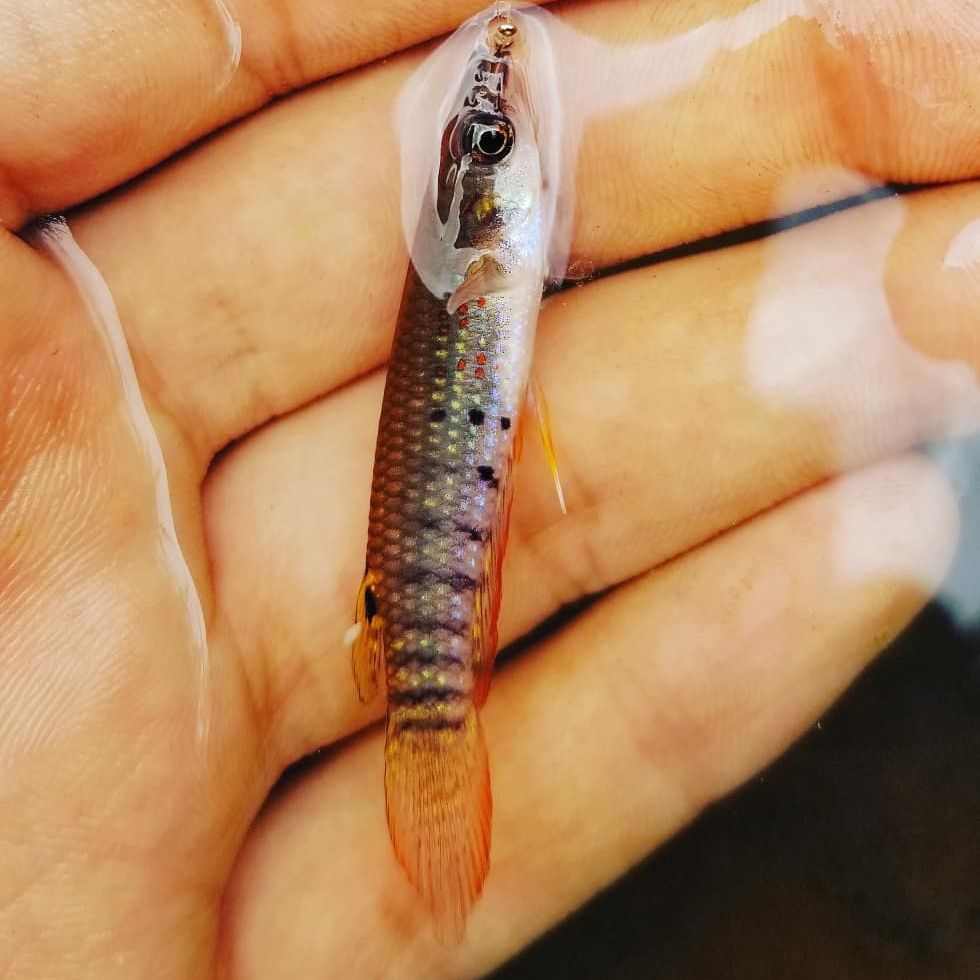
Adhering to these basic care parameters can result in a thriving environment for Striped Panchax.
Are Striped panchax Sensitive To Water Changes?
Striped Panchax have a capacity to adapt to a range of water conditions, yet they exhibit particular sensitivity to abrupt and extreme shifts in water parameters. These rapid changes, which can occur in temperature, pH levels, or salinity, place undue stress on the fish and can lead to weakened health.
To prevent any adverse effects from water fluctuations, it’s imperative to give attention to:
- Acclimatization: Introducing Striped Panchax to new water environments should be executed with patience, either by a slow drip or float acclimation technique.
- Water Changes: Regular, but gradual, water changes are advised to prevent drastic environmental shifts and to ensure stable living conditions.
Consistent water quality is not only a requirement for the well-being of Striped Panchax but is also key to elevating their natural resistance to diseases and other health issues.
Are Striped panchax Sensitive To Ammonia?
Yes, Striped Panchax are sensitive to ammonia, and exposure to this substance can result in considerable harm, including breathing difficulties, fin deterioration, and potentially fatal outcomes. Being categorized as hardy does not immunize them against the dangers of ammonia toxicity, which is a concern for all fish species.
To avert ammonia-related problems:
- Avoid Overfeeding: Excess food contributes to ammonia buildup; thus, feeding should be controlled.
- Regular Monitoring: Using water test kits to check ammonia levels helps maintain a safe environment.
- Tank Maintenance: Regular cleaning and maintenance reduce waste accumulation, lessening the risk of ammonia spikes.
By practicing attentive husbandry and maintaining low ammonia levels, Striped Panchax can thrive without the threats posed by ammonia.
Are Striped panchax Sensitive To Copper?
Striped Panchax share with many other fish species an intolerance to copper, which can be notably harmful even at trace levels. The presence of copper can trigger various health issues, including impaired immunity and elevated stress, potentially leading to mortality.
To protect Striped Panchax from copper exposure:
- Avoid Copper-Based Products: Care should be taken to select treatments and additives devoid of copper substances.
- Water Testing: Conducting routine tests can detect copper presence and prevent unintended exposure.
- Use Alternative Treatments: When addressing tank issues, non-copper-based remedies should be preferred.
Safeguarding the Striped Panchax from copper in their environment is essential to ensuring their longevity and well-being within an aquarium setting.

